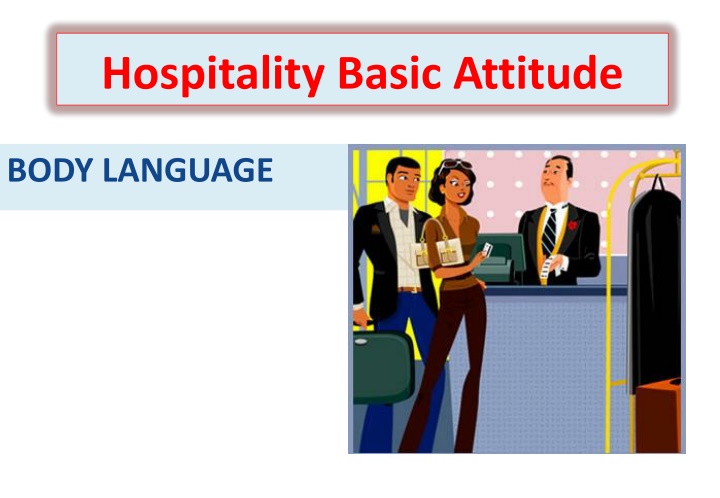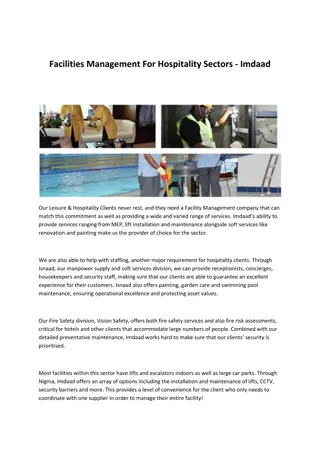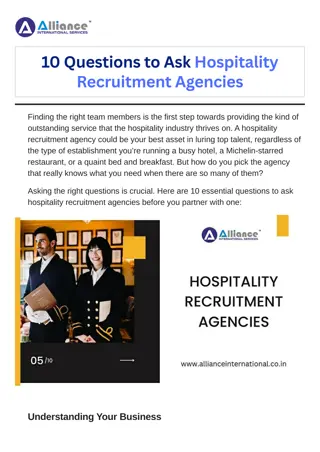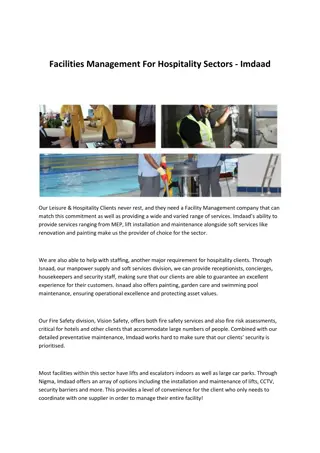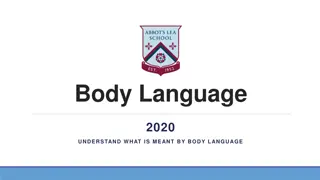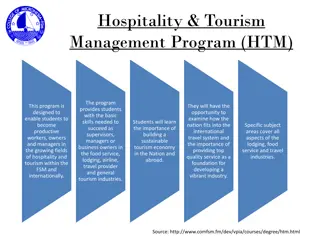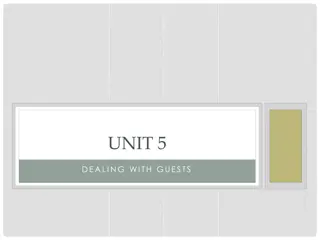Effective Hospitality Body Language and Communication Tips
Enhance your communication skills and body language in hospitality with this comprehensive guide covering standing, sitting, walking, talking, listening, and recognizing negative body language cues to ensure a positive guest experience. Learn how to convey respect, attentiveness, and professionalism through non-verbal cues while engaging with guests and colleagues effectively.
Download Presentation

Please find below an Image/Link to download the presentation.
The content on the website is provided AS IS for your information and personal use only. It may not be sold, licensed, or shared on other websites without obtaining consent from the author.If you encounter any issues during the download, it is possible that the publisher has removed the file from their server.
You are allowed to download the files provided on this website for personal or commercial use, subject to the condition that they are used lawfully. All files are the property of their respective owners.
The content on the website is provided AS IS for your information and personal use only. It may not be sold, licensed, or shared on other websites without obtaining consent from the author.
E N D
Presentation Transcript
Hospitality Basic Attitude BODY LANGUAGE
Negative Body Language Slumped posture Cracking fingers Walking quickly One raised eyebrow when listening Strolling (leisurely walk) Head tilted when listening Jingling change in pocket Arms crossed Pointing at person being spoken to Eyes half closed
Impatience Clues Continual nodding communicates impatience. Leaning back or stepping away. Turning their body away from you Pushing away from their tables. Gathering up papers. Closing their cases while you are still talking. Looking at their watches repeatedly.
Standing 1. Make sure you are standing appropriately. 2. Stand straight with both legs 3. in straight position 4. Arms beside or connected 5. In front of you, not crossed or behind you. 6. Never lean back while standing in front of the guest. 7. Never put your hands in your pockets
Talking 1. Make sure that your voice tone is not so high, not so low, not so fast and not so slow. 2. Ensure eye contact while speaking to the guest an show a suitable facial expressions during your conversation with the guest. 3. Use suitable respectable 4. expressions or words. 5. Speak clearly and show 6. interest to the guest conversation.
Listening 1. Listen carefully to all what the guest says. 2. Use eye contact. 3. Use your facial expressions while listening. 4. Use nodding as a sign of your listening. 5. Ask questions to confirm your understanding. 6. Wait until the guest finish their conversation, then answer or ask permission to leave.
Walking 1. Being in hurry is not a sign of professionalism, it means that things are out of control. 2. Walking slowly means that you are bored or not interested. 3. Looking straight forward shows ignorance to the guest and watching them shows disrespect to their privacy. 4. Walk straight and greet the guests if you looked in the eyes.
Sitting 1. Never sit down while the guest still standing. 2. Never sit with the guest without a previous permission. 3. If you were sitting and guest came, you should stand as a sign of respect. 4. Never sit in guest areas with legs crossed. 5. Sit properly on the chair in the presence of the guest or always in guest areas.
General Rules 1. Use eye contact while dealing with the guest. 2. Wait until the guest leave or finish first. 3. Never stare at the guest or their properties. 4. Always put a smile on your face 5. Use your facial expressions for the best effect.
